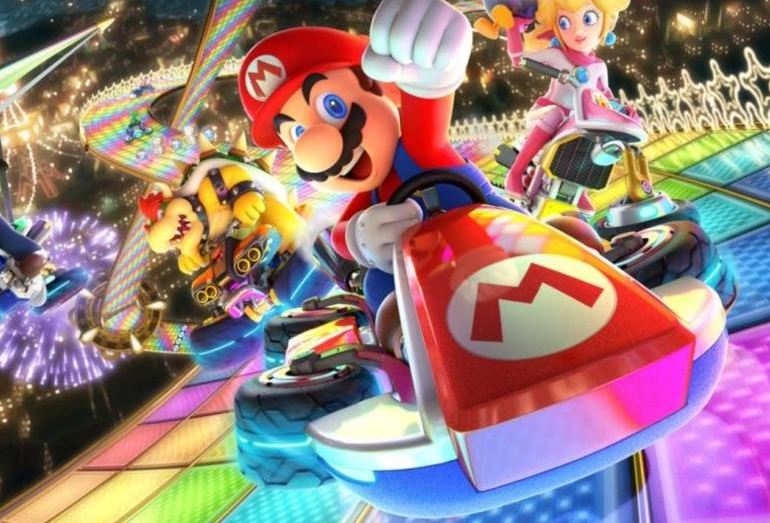
What is now a multi-trillion-shilling industry started out as a humble arcade machine created by a group of college students in 1971. Playing video games had been a geeky pastime for small groups on university tech campuses, but in 1971, Nolan Bushnell, a student at the University of Utah, joined up with Jim Stein, a Stanford University researcher, to make a game.
They were both players of a game called Spacewar!, which was being run in a university lab. From Nolan’s experience of working at amusement parks, the pair saw potential in making an arcade version of a video game.
Their game, Computer Space, was released for the first time for a physical test run in August 1971. The first arcade video game had been made.
1970s: The birth of gaming
After the release of Computer Space, many more games were produced over the decade. The most well-known was Pong, which, while primitive by the standards of today, is widely considered one of the most famous arcade games ever. The Atari-made title went on to sell 35,000 units worldwide.
This decade also saw the release of Space Invaders, which landed in Japan in 1978.
It would take some time for home gaming to catch on, but this set the foundations for it, with Atari releasing a version of Pong that could be played at home in 1975. Mattel also made a home games console in 1979, called Intellivision.
1980s: The heyday of the arcades
The 1980s is synonymous with the imagery of packed, neon-lit amusement arcades, and rightly so, as it was the decade that brought us Tetris, Pacman, which became the best-selling arcade game of all time, and Ms Pac-man.
Nintendo capitalised on the growth of arcades; creating iconic mascots like Mario.
But the decade nearly witnessed the demise of the rapidly-changing industry, in the video game crash of 1983.
However, later that year popularity surged again with the release of the Nintendo NES, which sold 61.9 million units.
1990s: Combat, consoles and controversy
As graphics and consoles improved, games now looked better. This development was captured best in 1992’s Mortal Kombat.
The decade also saw the release of many well-known franchises - from PlayStation to Sonic and Warcraft. But most notably it was the decade of Doom.
The 1990s were rounded off with critical and commercial flop Superman 64, for the Nintendo 64. It was considered one of the worst games of all time in the 90s, and still dominates worst games lists today.
The Noughties: An online revolution
As well as being the decade that brought us The Sims and mobile gaming - the bane of many a parent - this was the decade online gaming made its name.
In 2001, Microsoft released its own console, Xbox, which came with its flagship title Halo: Combat Evolved - a huge hit.
Its 2004 sequel, Halo 2, was the real revolutionary though, as it brought with it Xbox Live, which allowed gamers across the world to compete and play together.
The 2000s was also the decade that saw the release of the massive, multiplayer game, World of Warcraft, which enabled thousands of people to play together in the fictional world of Azeroth. At its peak in 2010, it had 12 million active subscribers.
Gaming also became accessible to a wider audience during this time.
2010s: Loot boxes and indie darlings
The most notable game released in the past decade has been without a doubt, Minecraft. The 2011 indie game, made in Sweden, has sold more than 200 million units - and without needing flashy graphics or a storyline. It uses a revolutionary, randomised 3D world, with a style that wouldn’t go amiss in a Lego collection.
However, the decade also saw the rising prominence of a number of infamous practices, notably the rise of loot boxes.
Although they appeared as early as 2004, they became mainstream in the mid-2000s as many games, such as 2017’s Star Wars Battlefront 2.
They require players to pay real cash for in-game perks, without knowing what they will receive, that gave them an edge. This system was dubbed “pay to win” by gamers. The link between gambling and gaming has been a big theme of the decade. One game, Counter-Strike: Global Offensive, made great use of in-game accessories, which were popular with young children. However, many websites allowed users to trade and gamble on them.
In 2016, Counter-Strike’s developers, Valve, took steps to shut down these websites and stop players from using their games to enable gambling.
It was also the decade that saw the release of the Nintendo Switch, a revolutionary hybrid of a home console and a portable system, and gaming giant Fortnite.
The pandemic effect
The pandemic has kept many of us indoors since March 2020, providing the perfect conditions for increased video game play.
Industry experts predict the biggest growth in the gaming industry will be online titles.
Party titles like Among Us also gained huge mainstream attention and were the perfect games to play with your friends at home, over platforms like Zoom and Discord. In November 2020, the game had 500 million monthly active players - not bad for a four-man team of developers.
 The Standard Group Plc is a multi-media organization with investments in media
platforms spanning newspaper print
operations, television, radio broadcasting, digital and online services. The
Standard Group is recognized as a
leading multi-media house in Kenya with a key influence in matters of national and
international interest.
The Standard Group Plc is a multi-media organization with investments in media
platforms spanning newspaper print
operations, television, radio broadcasting, digital and online services. The
Standard Group is recognized as a
leading multi-media house in Kenya with a key influence in matters of national and
international interest.









